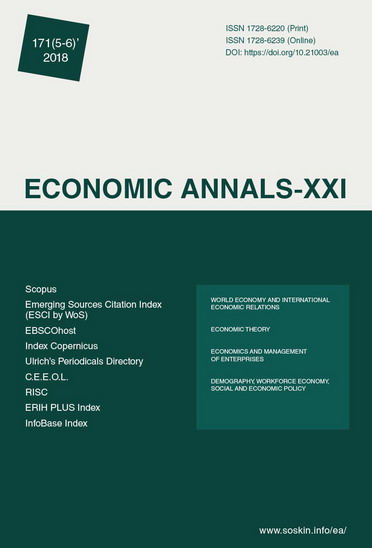Value added tax: effectiveness and legal regulation in Ukraine and the European Union
Value added tax: effectiveness and legal regulation in Ukraine and the European Union
Author(s): Irina Kovova, Oleksandr Malyshkin, Vlastimil Vicen, Svitlana Shulyarenko, Svitlana Semenova, Olga ShpyrkoSubject(s): Economy, EU-Approach / EU-Accession / EU-Development, Public Finances, Fiscal Politics / Budgeting
Published by: Institute of Society Transformation
Keywords: Value Added Tax; VAT; European Union; Ukraine; Integration; VAT Taxpayers; Objects of VAT Taxation; VAT Tax Base; VAT Tax Accounting Rules; VAT Tax Primary Documents; VAT Reports;
Summary/Abstract: Introduction. The accounting and tax legislation of Ukraine is in the process of its approximation to the requirements of the European Union. This is especially true for taxes accompanying the movement of goods and services in the context of cooperation between countries, with value added tax (VAT) being the main of these taxes is. Purpose. The purpose of the paper is to identify both common and distinctive features of the Ukrainian tax legislation on VAT with regard to the European requirements according to the current Association Agreement, assess the effectiveness of VAT rates and identify general trends in the dynamics of structural fractions of VAT in GDP and VAT rates. Methods. We applied the methods of scientific analysis and comparison, induction, and a systematic approach. Also, we used the expert judgment method to determine the likelihood of positive and negative consequences of lowering the VAT rate. Results. The study investigates the formation of legislation on administration of VAT in both the EU and Ukraine. The research determines the law basic eligibility criteria within the definition of: taxpayers, objects of taxation, tax base, tax accounting rules, tax primary documents and reports, and methods of administration. The article compares the basic details of the primary documents as well as their common and distinctive features. In particular, we compared primary and summary documents registration operations for displaying the electronic VAT administration system as well as general and reduced VAT rates in Ukraine and the EU. The authors of the article propose the main steps towards the convergence of electronic forms of primary documents. We conducted an analysis of the efficiency of VAT rates in both the EU and Ukraine and identified the factors that impact the change in the relevant indicators. The conducted research offers an overview of modern European trends in terms of improving VAT administration. Discussion. There is no absolutely effective VAT administration scheme. Therefore, the issue remains open and controversial. The study of the effectiveness of VAT rates in the EU and Ukraine has shown that, there was a decline in the efficiency in half of the EU countries during the 2014-2017 period. It has been estimated that a reduction of the joint European rate of VAT up to 15%, under certain specified conditions, would increase the efficiency of VAT rates in all EU countries and lead to other positive effects.
Journal: Економічний часопис - ХХІ
- Issue Year: 171/2018
- Issue No: 05+06
- Page Range: 4-14
- Page Count: 11
- Language: English

